
Cooperative Visiting Researcher
HOZUMI Kornyanat
Ph.D. (Informatics)
After completing her doctorate at a graduate school, HOZUMI served as a postdoctoral researcher at the Research Institute for Sustainable Humanosphere (RISH), Kyoto University in 2015, and then joined the NICT in the same year. She has been engaged in research related mainly to ionosphere observation, HF*1 radio propagation simulator, and low cost development of digital receiver prototype.
- Home
- Researchers
- HOZUMI Kornyanat
Ionosphere and radio propagation
A cutting edge research to support a stable operation of radio infrastructure
What is ionosphere?
Solar extreme ultraviolet (EUV) radiations photoionize the thermospheric neutral atmosphere leaving behind free electrons and positive ions surrounding the Earth. The partially ionized atmosphere is called the ionosphere. The ionosphere expands in an altitude range of 60 to 1000 km, and is divided into the D, E, and F regions from its altitude distribution. The ionospheric electron density has regular temporal cycles such as daily and seasonal variations and the approximately 11-year cycle associated with solar activity. Of benefit to us is the fact that ionosphere is good at refracting shortwave, which is why we can hop shortwave signals off the ionosphere to communicate with people over large distances (alternatively, of course, you could just use Skype, LINE, Facebook, Instagram, etc.).
*1 HF
HF (High Frequency): The range of radio waves from 3 to 30 MHz with corresponding wavelengths of 10 to 100 m.
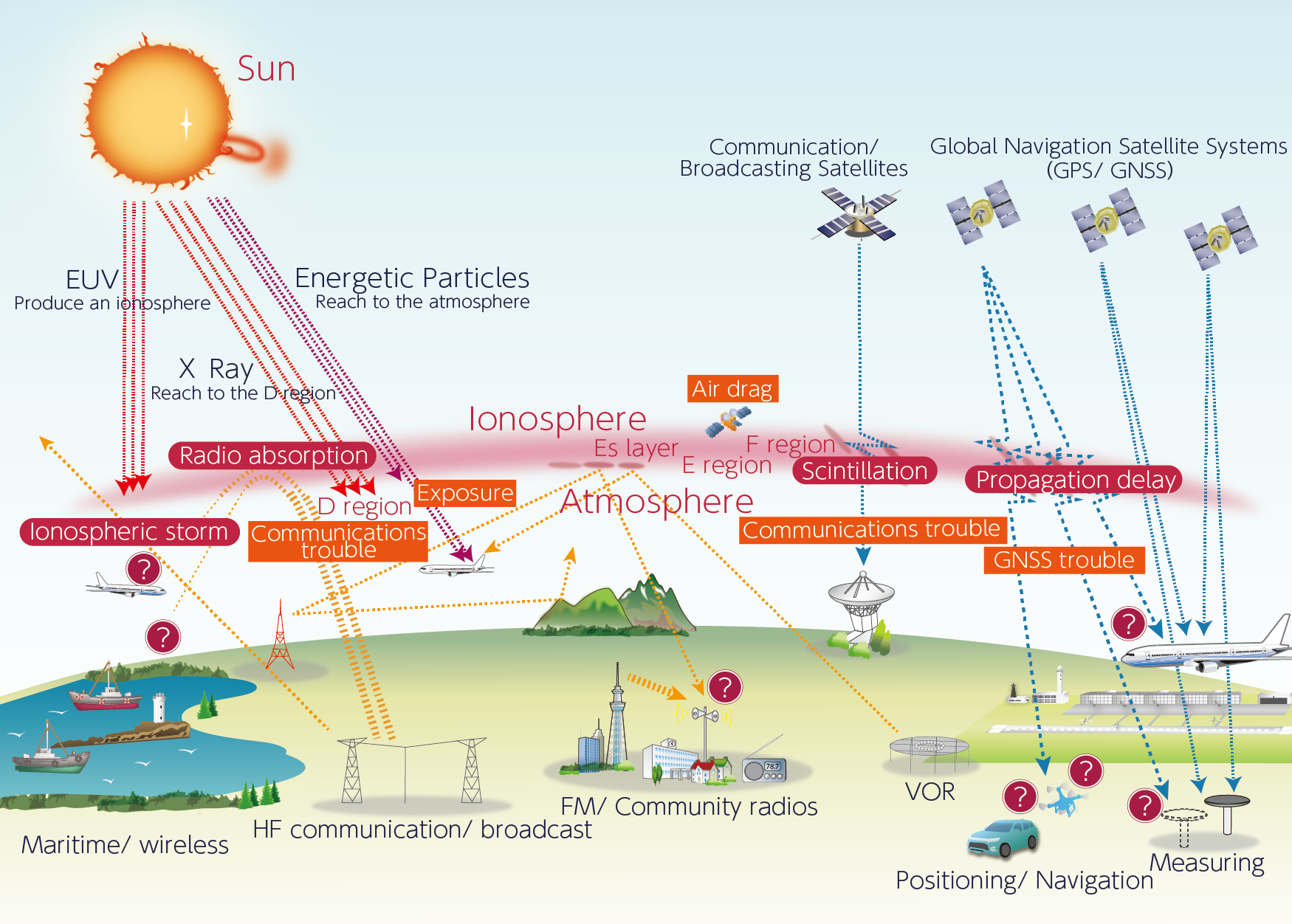
Figure 1. Abnormality of radio wave propagation due to space weather phenomenon
Ionospheric effect on radio wave propagation
Steady state of ionosphere is determined by the balance of photo ionization, recombination and advection (diffusion, EXB drift, neutral drag). When the balance breaks, ionospheric storms or ionospheric disturbances occur. Ionospheric storm is a phenomenon in which the electron density significantly decreases or increases in the F region, where a main proportion of the ionospheric electrons exists. During a negative storm, the maximum usable frequency (MUF) of HF*1 communication link decreases because of a decrease in the critical frequency of the F region. During a positive storm, the radio propagation delay of satellite signals increases and the positioning error tends to increase.

Figure 2. Atmospheric structure from ground to space
Immediately after a large solar flare, the solar X-ray flux rapidly increases. It causes anomalous increase in photo ionization in the D region. HF radio waves are absorbed in the D region. In the worst-case scenario, the HF radio waves turn "blackout" for several hours. The "blackout" regarding the solar flare is called the "Dellinger phenomenon".
Irregular fluctuations such as a "sporadic E layer" (Es layer) and "equatorial plasma bubble" (EPB) also frequently occur. The Es layer is a thin and dense layer that sporadically appears at around 100 km altitude. On the one hand, the Es layer is popular among amateur (HAM) radio fans because its intense layer enables anomalous long-distance propagation in HF and VHF*2 bands. On the other hand, the Es layer would introduce the over propagated signal as interference for the undesired area. The EPB usually begins to appear around sunset near the magnetic equator, propagates eastward, and extends its structure along the magnetic field. The EPB generated in Southeast Asia and/ or over the ocean to the west of Japan occasionally reaches Japanese meridian under many circumstances (i.e. high solar activity, geomagnetic storm, etc.). Once the EPB occurs, it degrades the passing-through satellite signals. As a result, decrease in signal to noise ratio (SNR) causes a failure of using SATellite COMmunications (SATCOM) that is an important means for aircraft en route communications. Moreover, it decreases the accuracy of the GNSS (Global Navigation Satellite System) L-band navigation that is widely used for airplane, car, ship, and smart agriculture system, for example.
*2 VHF
VHF (Very High Frequency): The range of radio waves from 30 to 300 MHz with corresponding wavelengths of 1 to 10 m.
Research activities in Southeast Asia
Ionosphere has a great influence on radio wave propagation that is one of the core researches of our institute. In recent years, radio waves have been widely used in modern technology. The society is recognizing the necessity of information on ionospheric disturbances. For example, when disseminating the use of quasi-zenith satellites to overseas, it is difficult to demonstrate the superiority of high-precision positioning unless we also consider the ionosphere information including the EPB together. Our laboratory has a track record on being a pioneer of ionospheric observations.
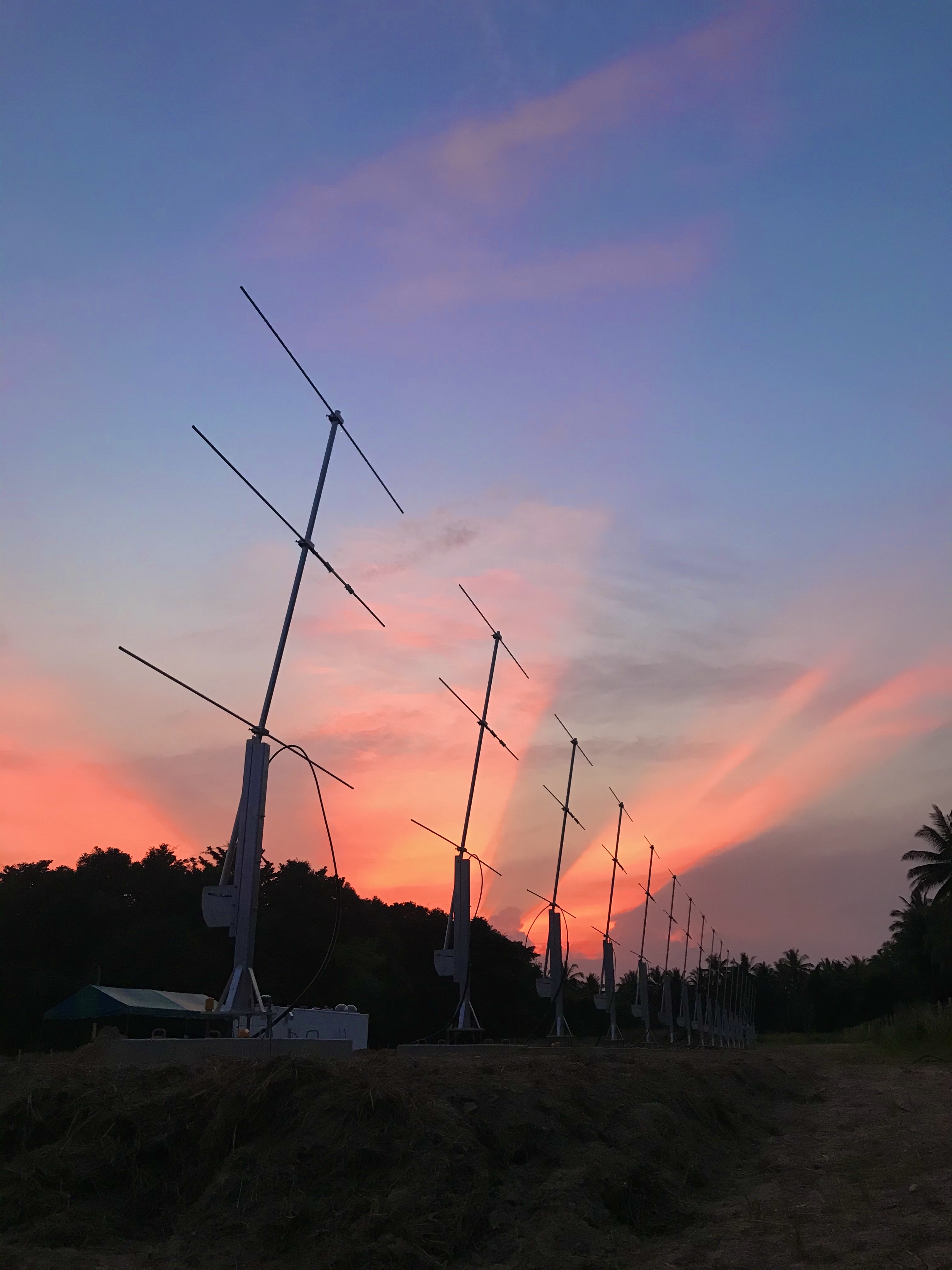
Chumphon VHF radar system for monitoring plasma bubble
Beside the domestic observation, we engaged in international activities aiming at information sharing and research collaboration such as SEALION (SouthEast Asia Low-latitude IOnospheric Network). Southeast Asia is a region where the EPB that affects Japan occurs. It is important to grasp the EPB impact earlier. Our laboratory, therefore, initiated the SEALION in cooperation with various countries in Southeast Asia to monitor the ionosphere including the EPB. Since the first construction of the SEALION in 2003, we have been operating various observation equipment in Thailand (Chiang Mai, Bangkok, Chumphon, and Korat), Vietnam (Bac Lieu), Indonesia (Kototabang), the Philippines (Cebu), and Laos (Vientiane). Data is transmitted to Japan in real time and used for grasping the current ionospheric situation, as well as EPB status. Nowcasts and forecasts of the EPB occurrence to the west of the Japanese meridian are strongly required. The basic generation mechanism of the EPB is already known, but it is still difficult to predict when and where the EPB generates. To capture an early stage of the EPB seeding, the new VHF radar was installed in Chumphon, Thailand in January 2020.
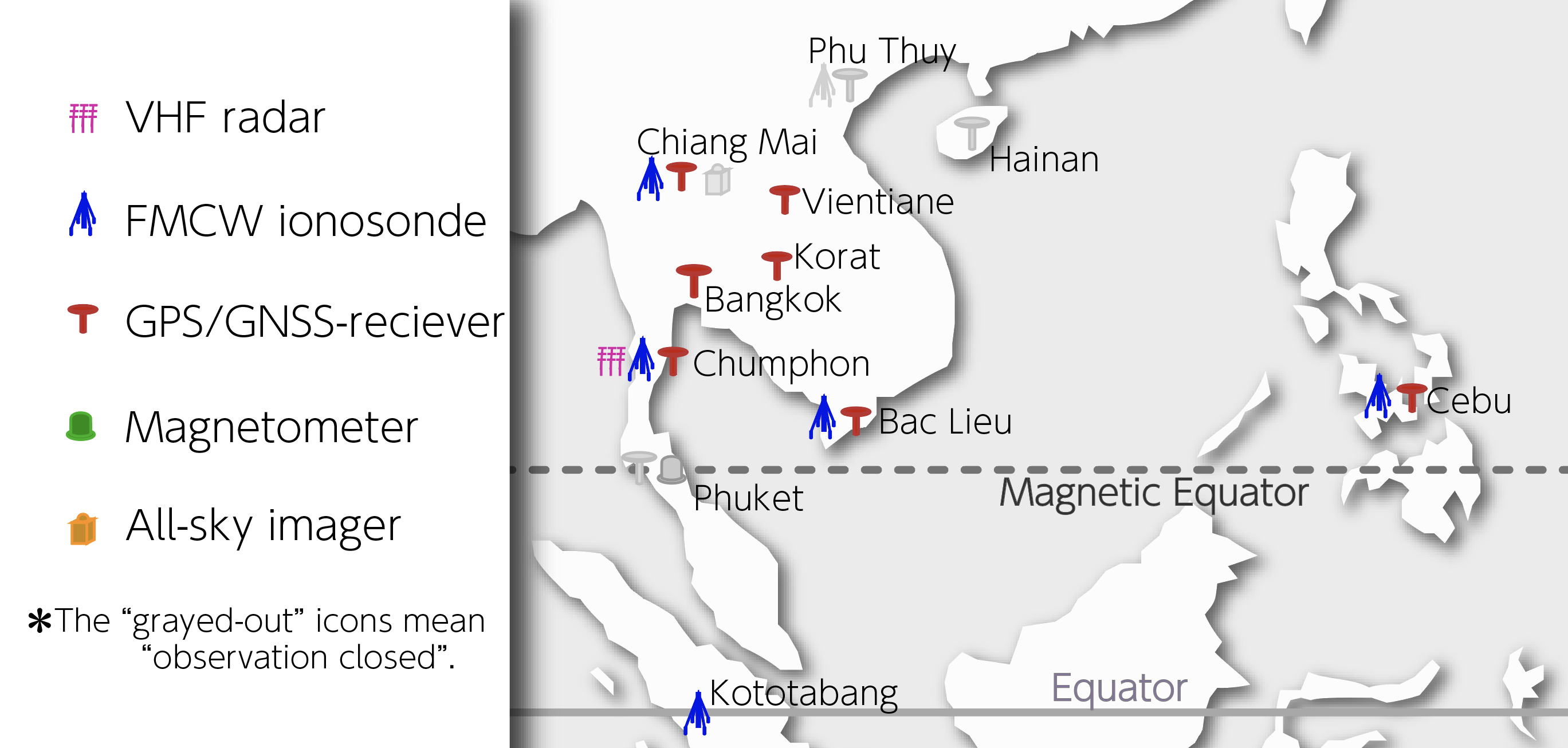
Figure 3. SEALION: SouthEast Asia Low-latitude IOnospheric Network
(URL:https://aer-nc-web.nict.go.jp/sealion/index.html)
Current R&D status
My work integrates both engineering and science works, observation and simulation abilities, and research and users' interests together. It is classified into three parts: "observation and modeling", "application construction", and "prototype development".
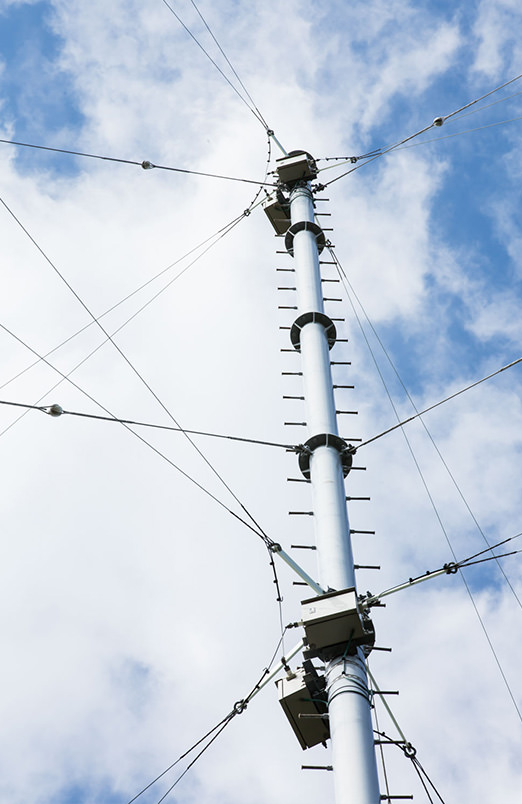
Ionosonde antenna
For the "observation and modeling", network of GPS and ionosonde from the SEALION is employed. The observed data is used as an input space in order to train the artificial intelligent (AI) to nowcasts and forecasts the ionospheric condition in Southeast Asia.
Along with "observation and modeling", an important thing is "application construction". This is a tool development for users to use ionospheric information more effectively and accurately. The application is named HF-START (HF Simulator Targeting for All-users' Regional Telecommunications) that is a user-friendly application to translate the research level data to the user level data based on users' needs. The goal of the HF-START is to communicate to the public on information of usable radio frequency and failure of satellite communications and navigation due to ionospheric disturbances.
For the "prototype development", I have been employing SDR (software-defined radio) and a Raspberry Pi to develop low cost digital receivers. Currently, there are two generations of the prototype. The first generation is the LASER (Low-cost Amateur receiver System Employing RTL-SDR) and the second generation is the LASER_FM (LASER for Frequency Modulation signals). The LASER has been developed to receive AM (Amplitude Modulation) signals in the HF band for the HF-START field campaign. The campaign is to retrieve the radio propagation time and distance from the real observation in order to validate the HF-START results. Regarding the prototype development, I received the URSI (Union Radio-Scientifique Internationale) Young Scientist Award at the AT-RASC (Atlantic Radio Science Conference) in 2018. Accordingly, the LASER_FM is being developed to study the effect of Es layer on radio waves in the VHF band. LASER_FM network will enable a wide area observation of the Es layer. Therefore, information on current status of Es layer distribution around Japan can be provided. Even though both of the LASER and the LASER_FM are developed for Japanese region, it is possible to apply them in other countries even in remote area (e.g. Africa) due to their low-cost and compact size. As technologies have turned to the digital era, I eager to keep developing many more digital receiver prototypes to benefit the society via the ionospheric research.
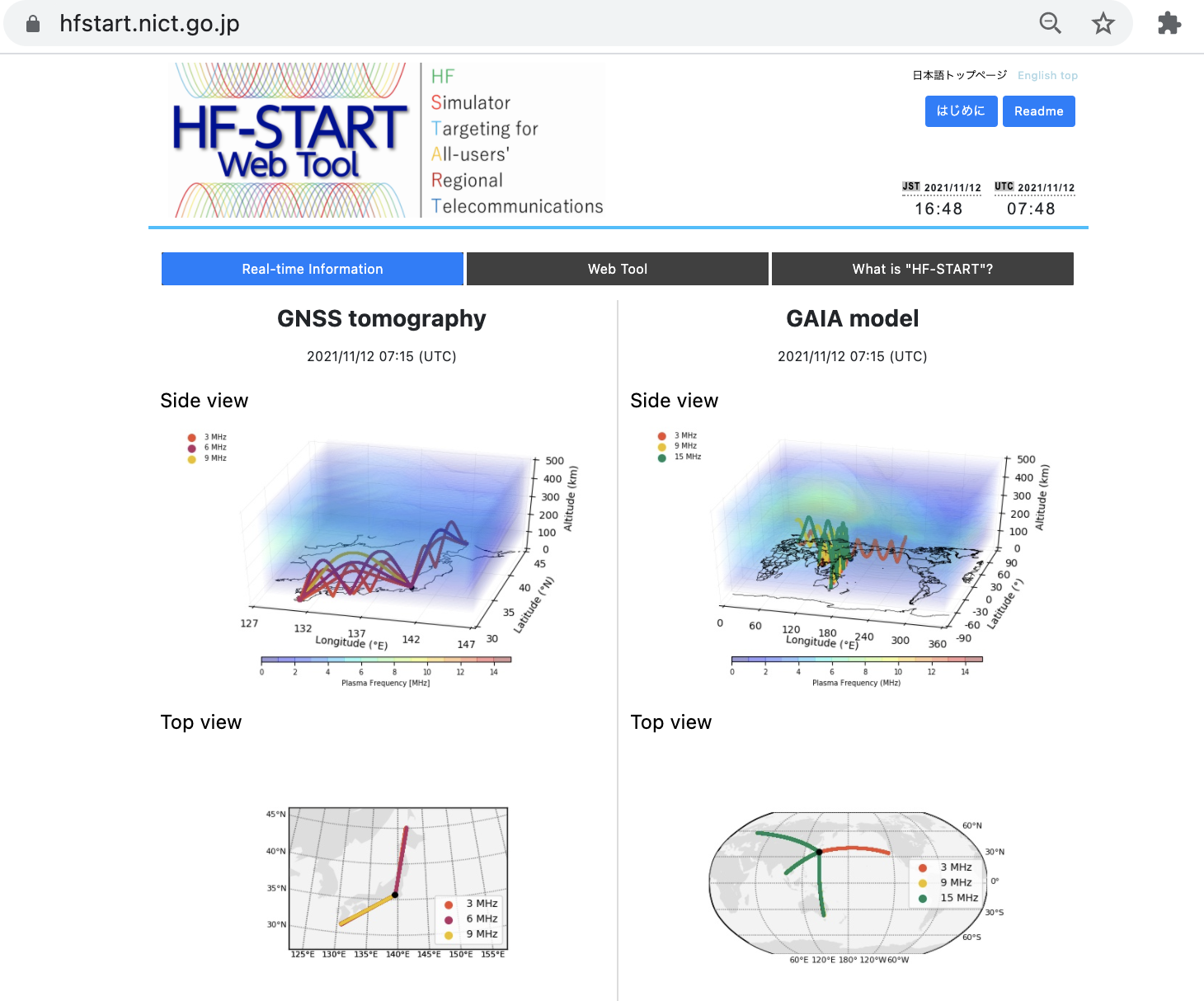
Figure 4. HF-START top page(URL:https://hfstart.nict.go.jp/jp/index.html)
Future prospects
In global economy, aviation has been one of the fast-growing industries. In order to avoid the risk of the space weather effect on communications and navigation systems, the International Civil Aviation Organization (ICAO) is considering incorporating ionospheric information (as a part of space weather information) in the operational requirement in coming years. Due to the economic development of Southeast Asia, the momentum that Southeast Asian countries want to observe the ionosphere by themselves is increasing. So, we are gradually promoting a knowledge and knowhow transfer of the ionospheric observation and research from ourselves to our SEALION friends via outreach activities, capacity building, and training program, for example. At the same time, we are currently developing low-cost digital receiver prototypes those are aware of overseas deployment. We are considering supplying equipment mainly for research collaborators in Southeast Asian countries when the development is completed.
To achieve a higher precision of the HF-START and to extend its capability, we will strengthen research partnerships among domestic and international research institutes. Integration of the HF-START and the real time ionospheric tomography leads to the world first near real time radio propagation simulator that truly bases on the real ionospheric observation. By receiving request and feedback under intimate communication with users, we will keep our application easy to use and to understand because space weather should not be for one but for all.
Japan is reaching the aging society. To ensure the safety of elderly people and to fill the gap of the labor lack for retaining an economic growth, GNSS-based appliances (e.g. smart remote monitoring for vital signs, smart navigation and tracking system for industries, smart precise agriculture system, autonomous driving) would unavoidably play a crucial role in the society. As we are National Institute of "Information and Communications" Technology we aim to communicate with people on the easy-to-understand basis in order to ensure a stable use of radio wave infrastructure for land, sea, and air not only in the normal situation, but also during the disaster situation. We will never stop developing.
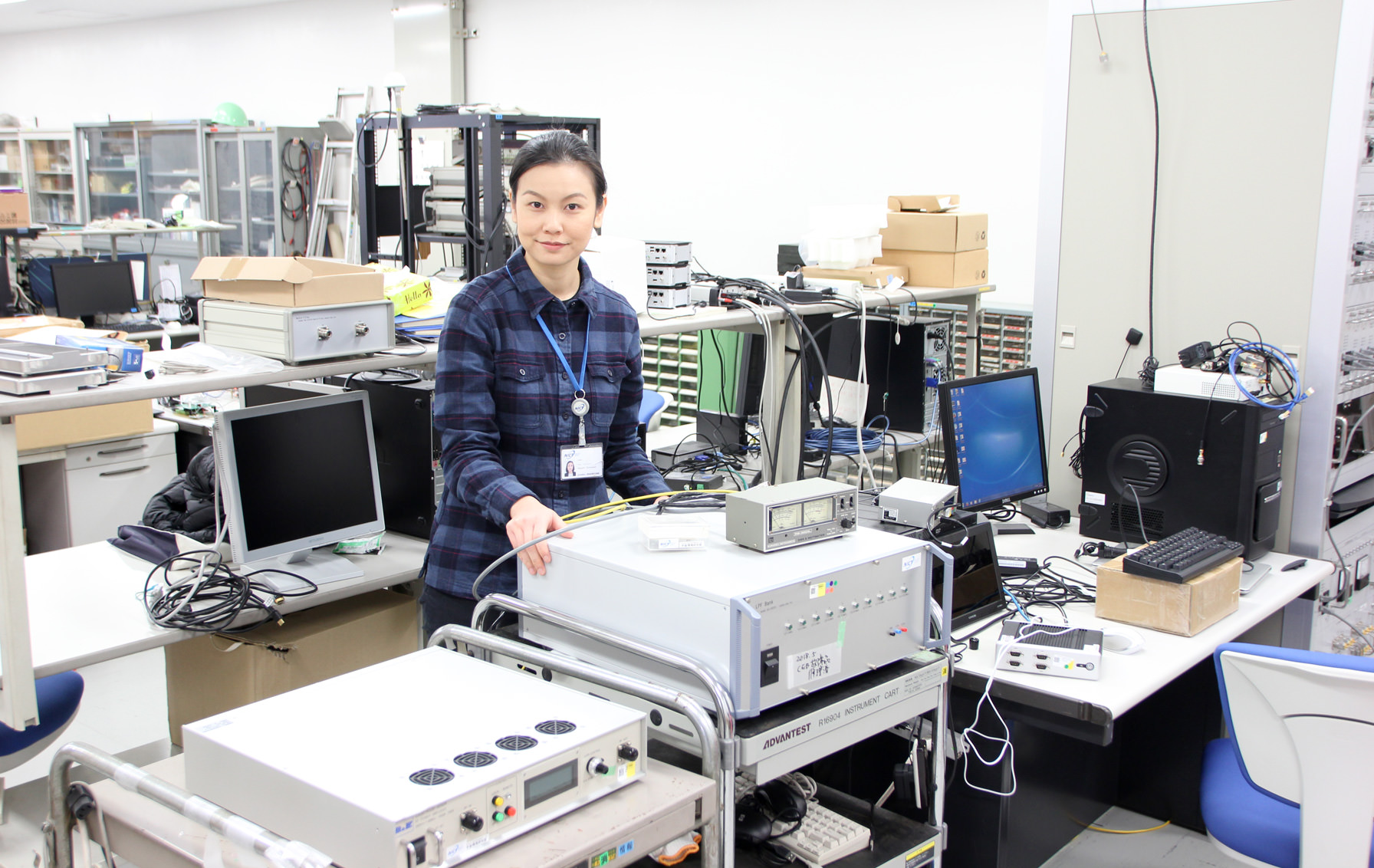
At the ionospheric observation building.
- Home
- Researchers
- HOZUMI Kornyanat